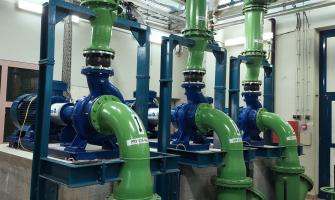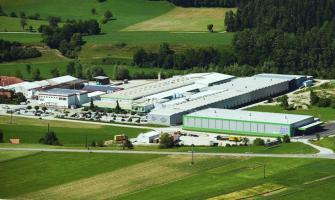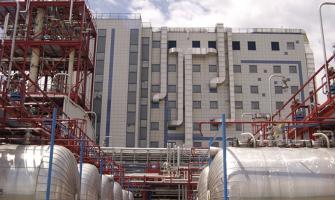Bogdan Popoiu joined Resalta as managing director of Resalta Energy in Bucharest in 2020. He sat down to share his extensive expertise in the field of renewables in the region, particularly in Romania, through this interview.

He is a graduate of the Academy of Economic Studies of Bucharest, International Economic Relations. After obtaining his degree he joined Trafigura Group, one of the largest global commodity trading companies, where he spent nearly 14 years before moving on to become General Manager of Romanian subsidiary of Ecore Group, a major recycling company, for 6 years. Prior to joining Resalta, Bogdan served as Deputy Manager of Next Energy Partners, Resalta's local joint venture partner. Next Energy Partners is part of a group of Romanian companies involved in producing renewable energy, supplying energy to end consumers, energy trading and developing projects together with CWP Renewables, a leading global developer of renewable energy.
How do you see the renewables sector in Romania, from your former working experiences?
The past few years have been quite challenging for the renewable sector in Romania, and this is the result of several factors.
Wind power development was stalled because of the lack of upgrades to the national power grid. In high wind potential areas, in the east and southeast of Romania, over 2,000 MW of wind farms were built during the first wave of renewables investment in the country. These take up the full capacity of the grid in those location, and as a result no additional wind power can be evacuated to the grid. This has significantly hindered further investments into wind power.
Moreover, there were no regulations in place that would allow for the signing of power purchase agreements which would allow private developers to invest in renewables (solar, wind or other) for direct reselling to a client (and not the grid), and a lack of incentives for new capacities installed, with the exception of the Environmental Fund Authority’s program for prosumers [a non-refundable grant for households to install rooftop solar photovoltaic plants].
As a result, the development of renewables was stalled over the last 3 years.
Installed wind power capacity in Romania (MW); source: Wattsight
|
|
Today |
2018 |
2019 |
2020 |
|
Total installed capacity |
3 213 |
3 029 |
3 123 |
3 239 |
|
Yearly increase |
81 |
-1 |
103 |
107 |
Installed solar PV power capacity in Romania, cumulative (MW); source: Wattsight
|
|
Today |
2018 |
2019 |
2020 |
|
Total installed capacity |
1 407 |
1 377 |
1 386 |
1 414 |
|
Yearly increase |
21 |
3 |
9 |
28 |
However, several recent developments indicate positive changes are on their way. As of 2020, the power purchase agreement (PPA) model has entered the regulatory framework in Romania, to support its strategy of increasing energy independence by 2030. Romania’s target to increase its own electricity production by 35% compared to 2020 will be achieved chiefly through building new wind (2.3 GW) and solar PV (3.7 GW) capacities. This will reduce electricity imports from other countries down to 17.8% in 2030 compared to 20.8% in 2020, making it the lowest dependence rate on electricity imports within the EU.
Along with the above, it is important to mention Romania’s plan to replace some coal supplied production units with combined heat and power production units, as well as to refurbish one nuclear reactor and building a 3rd new nuclear reactor at the Romanian Nuclear Power Plant in Cernavoda. This will refocus Romania’s energy landscape on renewable and nuclear energy sources, away from fossil fuels.
Quite crucially for the growth of wind power in the country, the grid infrastructure is planned to be upgraded and developed so it should reach an interconnectivity rate of at least 15.4%. The new 400 kV lines will increase the amount of electricity that can be transmitted from the high wind potential areas in eastern and southeastern Romania to the rest of the country, thus increasing renewable production capacities. The project is to be realized in two stages, the first completed by 2022 and the second by 2027.
How do you think solar power will develop in the region?
After the boom years of 2012-2014, when solar PV capacities increased exponentially, a period of decline followed. From 2016 until 2020 almost no new capacities were built. To make up for this loss, a constant growth from 2022 to 2025 of approximately 200 MW/year is expected in order to meet the country’s strategic targets. This should be followed by an acceleration between 2025-2030, once the grid upgrade is implemented and the new transmission lines are up and running.
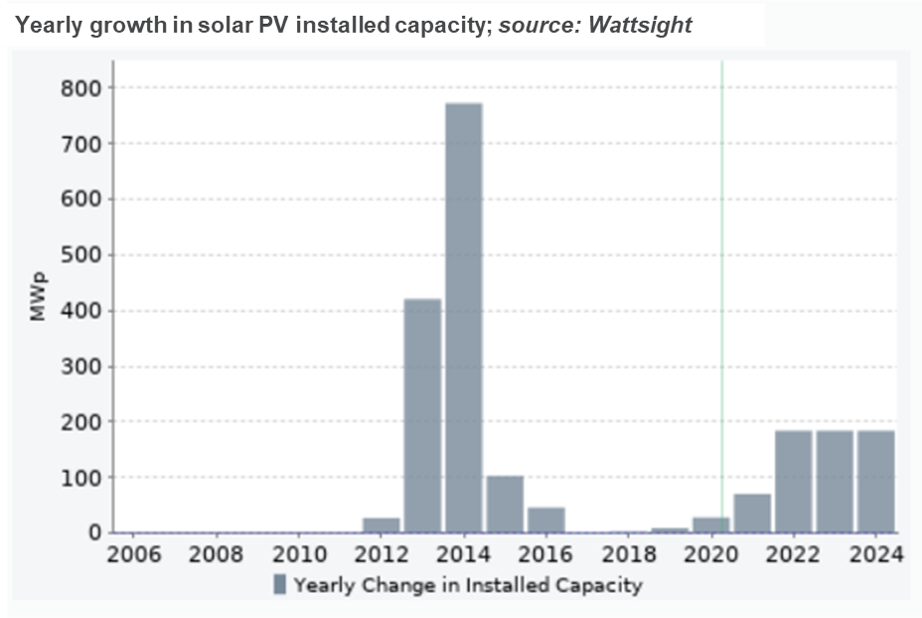
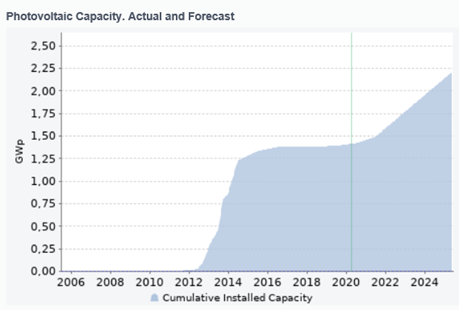
What are Romania’s decarbonization targets for 2030 and 2050? Do you believe enough is being done to achieve these?
Romania has released as of April 2020 its Integrated National Plan in the field of Energy and Climate Change 2021-2030, which follows five main directions: energy security, decarbonization, energy efficiency, domestic market energy and research, innovation and competitiveness.
According to the plan for 2030, the decarbonization targets for Romania are as follows:
- Reducing domestic greenhouse gas emissions by at least 40% by 2030 compared to 1990;
- Renewable energy consumption of 32% in 2030;
- Improving energy efficiency by 32.5% in 2030;
- The objective of interconnecting the electricity market at a level of 15% up to 2030.
2050 decarbonization targets have not yet been set but will most likely follow the same goal of 55% reduction of domestic greenhouse gas emissions compared to 1990 as the one set by the EU.
With regards to the steps done by the country to achieve these, there is certainly much room for improvement. However, noticeable things have been done already such as National Car Park Renewal Stimulation Program, has been running for several years now, as well as the previously mentioned Environmental Fund Authority’s National Program for Prosumers and the Program for Cyclists Tracks, to name just a few of the policies and measures implemented to help reduce domestic greenhouse gas emissions.
Is there enough policy support for the development of renewables in the country, and if not what do you think would be required?
There is not yet a significant support for the development of renewables in the country, although there are good intentions and the political factors seem to be treating this as a priority for the country, at least outwardly.
Romania is now undergoing a transformative period, with local elections which took place three weeks ago bringing important changes. We are already looking towards the Parliamentary elections due in December 2020 to also usher in some changes, so we expect that starting in 2021 a new frame will be provided to fulfill the targets mentioned in the country’s development strategy.
What steps do you think the private sector should take to decarbonize?
Slowing down climate change and arriving at a net zero scenario requires more than short term goals. We must think far ahead and consistently implement policies that look beyond the next ten or twenty years. Ideally, these policies can spur changes in not only investments but also behavior, both from companies and individuals. We must also not forget social policies that will enable parts of the labor force most affected by the switch to renewables to retrain and benefit from the changes.
Decarbonization is achievable and should be part of well-planned, robust economic growth that emphasizes several areas:
- A shift from relying on fossil fuels for electricity to using clean energy that decarbonizes electricity
- With increasing amounts of clean energy following, a massive shift to electrification can then increase access to clean energy and displace polluting fuels
- Improving energy efficiency on the whole lowers demand for electricity
Prijavite se na novosti tvrke Resalta.
Uvjeti.

